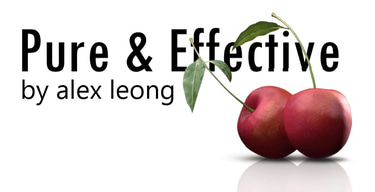

Live Probiotics vs. Spore-Forming Probiotics
Ever wondered about the difference between live probiotics and spore-forming probiotics? You're not alone! Each type of probiotic has its own unique benefits, and understanding these differences can help you make the best choice for your health.
Getting to Know Live Probiotics
Live probiotics are like energetic party-goers, active and eager to do their job when you take them. They naturally inhabit our gut and are designed to settle in and work effectively once they reach it. However, their journey is quite an adventure! Externally, they face challenges like varying temperatures, moisture, and oxygen exposure. Internally, they have to survive the harsh acid environment of the stomach and bile, which can kill many before they even reach their destination. Freeze-drying technology helps keep them stable at room temperature, but their ability to endure both external and internal challenges is crucial for their effectiveness in supporting gut health.
The Lowdown on Spore-Forming Probiotics
Spore-forming probiotics are the tough adventurers of the probiotic world. Typically soil-based and not naturally part of our gut microbiome, these probiotics are incredibly resilient to extreme conditions like high temperatures and stomach acid. While they are designed to eventually colonize the gut, their adherence to the gut wall isn’t their strong suit. Unlike some live probiotics, there isn’t substantial evidence confirming their ability to effectively stick to the gut lining and establish a stable presence. They’re great for boosting microbial diversity in the gut, but there’s still more to learn about their long-term effects and safety, especially for those with weakened immune systems.
What to Keep in Mind
Research and Benefits: Live probiotics have a wealth of research backing them, so their benefits, recommended dosages, and roles in gut health are well understood. Spore-forming probiotics, while promising, are newer and not as thoroughly studied.
Colony Forming Units (CFUs): Live probiotics come with a clear CFU count, making it easy to know how many beneficial bacteria you're getting. Spore-forming probiotics also have CFUs, but their resilience and freeze-dried state can make the count less straightforward.
Gut Colonization: Live probiotics, such as Lactobacillus and Bifidobacterium, are generally better at establishing themselves in the gut and providing balanced health benefits. Some strains are designed to withstand the acidic environment of the stomach, which helps them survive and colonize effectively. Spore-forming probiotics contribute to microbial diversity but may not colonize as effectively and could pose risks for those with compromised immunity.
Synergistic Strains: One of the coolest things about probiotics is how different strains can work together to amplify their benefits. In a well-designed probiotic blend, you’ll find main strains that provide foundational support for digestion and immunity. Supporting strains then build on these benefits by improving adhesion, boosting immune function, and maintaining gut stability. This synergy means that the combined effect of the strains is greater than the sum of their individual benefits, leading to a comprehensive approach to gut health. So, a well-formulated probiotic isn’t just about quantity; it’s about how those strains interact and support each other to create a balanced and effective supplement.
Packaging and Strain Counts
Packaging plays a crucial role in the effectiveness of live probiotics. Nutrilite uses custom-designed individual stick packs instead of capsules or powders in containers. This innovative packaging helps ensure the probiotics arrive in excellent condition (meaning they arrive alive) and remain effective throughout their 18-month shelf life.
Once in the digestive system, the specific acid-resistant strains used in these probiotics are designed to withstand stomach acid and effectively adhere to the gut. This helps them start colonizing and providing health benefits. Ensuring that probiotics arrive alive and adhere to the gut are key features of these products.
And guess what? With this top-notch packaging, you don’t have to worry about exposure to external conditions or carrying your probiotics on trips. You can take them anywhere without stressing about their stability. Just remember, this doesn’t mean you should test their durability by leaving them under the hot blazing sun! Cheers to hassle-free, gut-friendly journeys!
Additional Prebiotics Included
Another bonus with some probiotic supplements is the inclusion of prebiotics. These are non-digestible fibers that serve as food for probiotics, helping them thrive and multiply in the gut. Including prebiotics in a probiotic supplement can enhance the overall effectiveness by supporting the growth of beneficial bacteria and improving gut health.
Prebiotics play a vital role in maintaining a balanced microbiome, promoting regular bowel movements, and enhancing nutrient absorption. So, choosing a product with both probiotics and prebiotics can give you a comprehensive approach to gut health, making sure the beneficial bacteria have the right environment to flourish.
Conclusion
In summary, whether you choose live probiotics or spore-forming ones depends on your health goals and needs. Both types have their strengths, but understanding their unique features—along with the benefits of prebiotics—can help you make the best choice for your gut health!
Return to:
